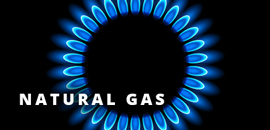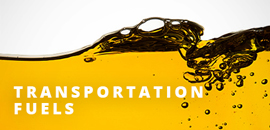PROGRESS REPORT
- In fiscal 2022, the campus consumed 137.44 One Thousand British Thermal Units (kbtu)/square foot (ft2), a 3.7 percent decrease of the previous year. The goal was to consume no more than 140 kbtu/ft2. The following impacted Texas Tech’s energy performance:
- Degree days decreased by 5 percent, resultant energy use intensity (EUI) reduction should have been 1.59 kbtu/ft2.
- Energy usage per ton was identical to last year, yet Texas Tech used 700,000 more tons of chilled water this summer due to the increase in temperatures. The average outside air temperature for the summer months increased by an average of 7 percent. This increased the EUI by 0.83 kbtu/ft2.
- New facilities increased square footage by 450,928 ft2, and decommissioned facilities decreased square footage by 6,461 ft2. The net campus square footage increased by 444,467 ft2. The new buildings increased the EUI by 4.05 kbtu/ft2.
- Texas Tech experienced an abnormal number of condensate and steam leaks in the steam-condensate tunnel system. This led to energy inefficiencies at the Central Heating and Cooling Plant. For the year, Texas Tech averaged 38 gallons per minute in condensate loss. The losses increased campus cost by $194,087 and impacted the EUI by 1.32 kbtu/ft2.
- Chilled water losses in our tunnel system average 5.7 gpm for the fiscal year. The average losses should be around 2.5 gpm. The losses increased campus cost by $9,713 and increased the EUI by 0.2 kbtu/ft2.
- Freeze Protection Protocol: If outside air drops below 32 degress, Texas Tech turns on air handlers and pumps to protect coils and pipes from freezing. The cost of this practice in fiscal 2022 was $215,778. Freeze protection increased the EUI by 1.07 kbtu/ft2.
- Free Cooling Project at CHACP 1 – The Water Side Economizer provided more than 3 million tons of free cooling (7 percent of total chilled water produced) this fiscal year, an estimated savings of $59,052.
- Additional impacts on Texas Tech’s energy performance were:
- Back Pressure Turbine at Central Heating and Cooling Plant (CHACP) 1 supplied 20.6 percent of CHACP 1’s electrical use for a cost savings of $384,791.
- Received free cogeneration steam from utility provider, which saved $123,184.
- Retubed Boiler #2 at the CHACP for reliability of capacity. Project cost is $4 million.
- Created a Campus Sustainability Advisory Committee to develop a Sustainability Master Plan provide recommended guidelines for future sustainability efforts.
- Repaired a loose pneumatic line on the chill water valve at the Music Building to reduce chilled water consumption bypassing through the building.
- Installed and programmed chilled water meter at the Human Sciences Tower.
- Replaced faulty variable frequency drives on two air handlers at the Education building.
- Submitted a list of deficiencies in the Building Automation System (BAS) for new construction facilities: Weeks Hall, Experimental Sciences II, Talkington Theater Expansion and Black Culture Center.
- The eSight Energy Accounting System identified:
- An increase in domestic water usage at Mechanical Engineering North. The excessive use at Mechanical Engineering North was identified as a preventative measure to protect sump pumps.
- Excessive use at the Wiggins Complex which turned out to be a domestic water leak in the mechanical room.
- Chilled water return temperature was 51 degrees. Investigated and repaired a loose pneumatic line on the chill water bypass valve at the Classical Modern Languages and Literatures building.
- Chilled water return temperature at Mechanical Engineering North was below the campus standard. Investigated and replaced faulty supply and return temperature sensors on the building side and the tunnel side of the chilled water system.
- An increase in chilled water flow at the Wiggins facility. Identified that overrides were placed in the control system, and 54 percent savings were realized when overrides were removed.
- In fiscal 2021, the University updated chilled water controls (valves and actuators) at Human Sciences Tower building. Savings was tracked in eSight. Consumption was reduced by 22 percent for $23,120 in savings.
- Texas Tech University also:
- Secured steam to campus air handlers during summer 2022 to eliminate simultaneous heating and cooling which would decrease efficiency.
- Installed a condensate meter at the Art 3D building.
- Installed a chilled water meter at United Supermarkets Arena.
- Integrated five chilled water meters and one steam/condensate meters into the eSight Energy Accounting System and Utilivisor.
- Submitted 238 workorders for discrepant air handler operations, faulty HVAC equipment and buildings’ chilled water return temperature setpoints.
- Reprogrammed variable air volumes on the fourth and fifth floor of the Texas Tech Plaza to better serve the occupants.
- Replaced faulty variable frequency drive for one air handler at Art 3D.
- Installed a new chilled water valve on air handler #1 at the Science building.
- Repaired steam/condensate leak from a buried line.
- Upgraded HVAC controls at the Computer Center.
- Completed the install of power pressure pumps at Mechanical Engineering (ME) North, ME South, Psychology and Science.
- Collaborated with Utilities to develop a Demand Response Protocol.
- Replaced faulty variable frequency drives on two air handlers at the Education Building.
- Installed Genesis Air PCP Compound in two air handlers at the Burkhart Autism Center to reduce airborne biologics and volatile organic compounds.
- Reviewed construction documents for National Ranching Heritage Center, Academic Sciences Building, Talkington College of Visual Performing Arts and the Museum of Texas Tech University to ensure HVAC systems and controls meet Texas Tech’s standard for energy efficiency goals.
- Replaced faulty variable frequency drive for one air handler at the Human Sciences Building.
- Replaced faulty variable frequency drive for one air handler at Holden Hall.
- Audited chilled water control system to identify differential setpoints higher than 15 psi. Science and Agriculture Education were used as test studies for reducing differential pressure and studying the effects on providing adequate cooling to the buildings.
- Identified that College of Media & Communications chilled water pump was running continuously. Corrected the controls program and realized a 26 percent savings seen in one week.
- Cleaned 49 chilled water and heating water coils at four buildings: Human Sciences, Animal Food Science, Chemistry and Experimental Science.
- In fiscal 2021, replaced chilled water valves and controls at these housing halls: Horn Knapp, Stangel Murdough, Gordon and Coleman. The total housing investment was $113,000. Savings was tracked in eSight. Housing chilled water costs reduction was $37,335, on track for a three-year payback.
- Upgraded six air handler controls at Murray Hall for energy performance and optimization.
- Upgraded chilled water valve controls for one air handler at Clement Hall.
- Upgraded chilled water and heating water system controls at Coleman.
- Installed HVAC controls at John Walker Soccer Complex.
- Upgraded chilled water system controls at Horn Knapp Hall and Stangel Murdough Hall.
- Replaced steam control valves at Gordon, Carpenter Wells and Horn Knapp to provide better service to customers for operation of heating the facility during the winter.
- Performed a complete control upgrade for all HVAC systems and components at the Student Union Building. Savings will be verified in fiscal 2023.
- Submitted a list of deficiencies in the BAS system for Student Union Building.
- Created a prioritized list of energy projects and recommendations for University student housing.
- Corrected the steam valve operation and setpoints at Leisure Pool reducing the usage by 16.5 percent ($23,369 savings).
- Generated 54 HVAC work orders for specific equipment discrepancies for Athletics, United Spirit Arena, Innovation HUB, Student Wellness and the Student Recreation Center.
- Performed steam/condensate audit of condensate receivers on campus to identify buildings that are to drain. Work orders were submitted for each building identified.
- Performed six interior lighting audits: Academic Science Building (from construction plans), Bledsoe Gordon, Stangel Murdough, West Village A, West Village B and Talkington Hall.
- Performed 16 exterior lighting audits: Math, National Wind Institute, Experimental Science Business, Animal Food Science, S-1 satellite, Equestrian Center, Child Development, Human Sciences, Black Cultural Center, Student Wellness, Honors Hall, West Village, Stangel Murdough, Bledsoe Gordon, Talkington Hall and Boston Commons.
- Performed seven HVAC audits: Reese 555, Texas Tech Plaza, Hulen Clements, ESB II, USA, Coleman and Horn Knapp.
- In efforts to recapture condensate from the campus, the University installed condensate tanks heads at Human Sciences and Human Sciences Tower and steam power pressure pumps at Mechanical Engineering North, Mechanical Engineering South, Science and Psychology.
- In the fall, while steam was on to the campus, the steam/heating water system controls were audited to identify whether all heating water systems were following the Campus Standard lock-out program.
GOALS
Through identification of energy savings measure, Texas Tech University will look to measure and analyze campus energy consumption and formulate strategies to create resource abundance.
| Utility | Target Year | Benchmark Year | Percentage Goal |
|---|---|---|---|
| Water | FY2023 | FY2018 | 0.02 |
| Electricity | FY2023 | FY2019 | 0.025 |
| Transportation Fuels | FY2023 | FY2019 | 0.02 |
| Natural Gas | FY2023 | FY2019 | 0.02 |
STRATEGY FOR ACHIEVING GOALS
-
- Create a five-year plan for energy efficiency projects.
- Institute monthly reviews of the Equipment Down Report and Software Override Report with goals to prioritize equipment repairs that are energy intensive.
- Complete the recommissioning project for Murray air handlers. Replace chilled water and heating water valves and actuators.
- Develop a Sustainability Master Plan to administer and provide guidelines for future sustainability efforts.
- Use an Energy Brokerage Firm to help facilitate the migration from Lubbock Power & Light to ERCOT. The Firm will also assist Texas Tech System with developing a comprehensive energy master plan.
- Use the Water Side Economizer at the CHACP to achieve electric and natural gas savings when campus load allows.
- Install two 1,500-ton electric chillers at CHACP 2 to increase capacity, efficiency, and diversification in the production of chilled water. Project cost is $4.5 million.
- Incorporate dashboards and alarms in eSight to assist with persistent commissioning and monitoring of building utilities.
- Repair steam and condensate leaks to regain efficiencies in the production of steam for heating the campus.
- Perform energy assessments (building models and audits) for all E&G and AUX facilities greater than 100,000 square feet in accordance with the Article IV Rider Section 17.11 Energy Efficiency Savings for State Facilities.
- Ongoing HVAC recommissioning and controls upgrades.
- Identify HVAC exceptions that can be better served by supplemental units.
- Upgrading metering systems for electricity, steam, natural gas, chilled water, irrigation, and domestic water, and integrating into eSight Energy Accounting System to improve energy monitoring and identification of excursions. Select meter data will be connected to Utilivisor for the purpose of balancing loads at CHACP1.
- Work with Facilities Planning and Construction (FP&C) to ensure meters are installed and integrated into eSight and Utilivisor during the construction process.
- Perform building audits to identify energy efficiency measures and update Building Energy Management Profiles.
- Systematically recommission chilled water mixing valves to increase chilled water delta T to >16°.
- Audit steam distribution system.
- Identify and utilize an energy modeling software to create energy models for campus buildings.
- Prepare monthly or quarterly energy reports for all Auxiliary units.
- Identify and document sequences of operation for all HVAC systems.
- Implement global control commands for Demand Response, Heat Load Protocol, Freeze Protection, Occupied/Unoccupied setpoints, and Campus On/OFF.
- Upgrade the HVAC controls and equipment at Music, Child Development, Math, Psychology, and Animal Food Science.
IMPLEMENTATION SCHEDULE
Texas Tech University utilizes a persistent commissioning model to manage ongoing commissioning projects. This next fiscal year Texas Tech will be upgrading HVAC and controls for five buildings. The Facilities Systems department sets baseline performance models developed upon the sequence of operations created per building. From the baseline models, the performance is monitored and tracked through eSight and Utilivisor.
In fiscal 2023, Texas Tech will work closely with Tradition Energy to procure an electrical provider and create a five-year Energy and Sustainability Plan.
AGENCY FINANCE STRATEGY
Each year Deferred Maintenance and Utility Funds are budgeted to the extent possible.
EMPLOYEE AWARENESS PLAN
Texas Tech will utilize the TTU Energy Management webpage and other campus media outlets to share information on the energy-saving measures being implemented on campus.
The Facilities Systems department hosts a monthly Energy Committee meeting with Operations Division staff to highlight energy-saving opportunities and realized savings on campus. This meeting is the core of Texas Tech’s energy management program through collaboration of work with the Central Heating and Cooling Plant, Facilities Systems and Environmental System Maintenance groups.
The Facilities Systems department also hosts monthly meetings with auxiliary customers to discuss persistent commissioning and energy consumption and cost trends within their facilities. The department also assist auxiliary customers with identifying and planning energy-saving opportunities.
Texas Tech also will use software, eSight Energy Accounting System and Utilivisor to showcase energy consumption for buildings.






